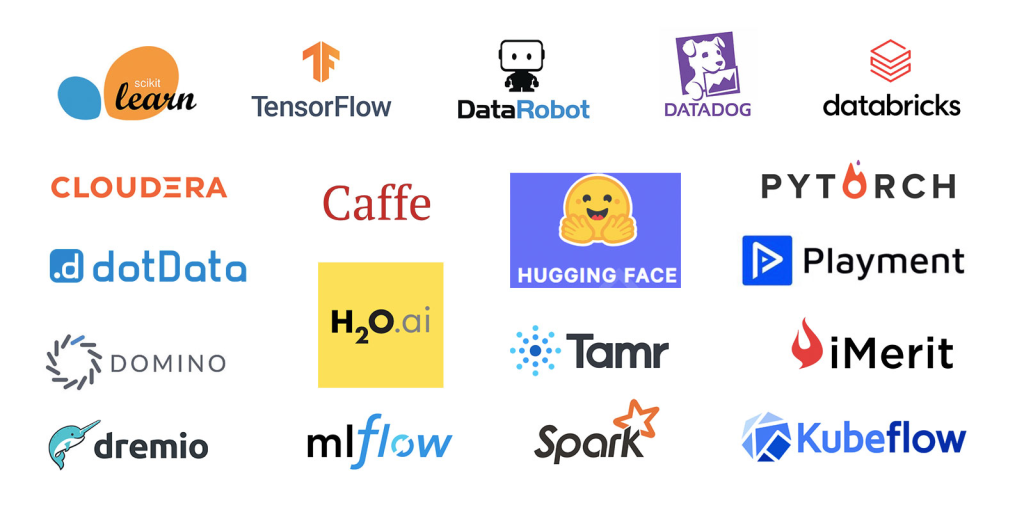
The machine learning (ML) landscape is constantly evolving, offering an array of tools to tackle diverse tasks and challenges. In 2024, choosing the right tool requires careful consideration of your specific needs and goals. Here’s a breakdown of popular categories and leading contenders:
AutoML Platforms:
- Google Cloud AutoML: Simplifies ML development by automating model selection, hyperparameter tuning, and deployment for various tasks (image, text, translation).
- Amazon SageMaker Autopilot: Offers similar functionalities for building and deploying ML models on AWS, focusing on ease of use and rapid experimentation.
- Microsoft Azure Automated ML: Automates ML model development within the Azure environment, supporting various tasks and data types.
- H2O AutoML: An open-source platform for automated ML, providing flexibility and customization options. Requires some technical expertise.
Open-source Frameworks:
- TensorFlow: A popular and versatile framework for various ML tasks, offering flexibility and large community support. Requires coding knowledge.
- PyTorch: Another popular open-source framework, known for its ease of use and dynamic computational graphs. Preferred for research and rapid prototyping.
- Scikit-learn: A user-friendly library for building and deploying basic ML models, focusing on classification, regression, and clustering. Ideal for beginners.
- XGBoost: A powerful and scalable library for tree-based boosting algorithms, achieving top performance in various machine learning competitions.
Specialized Tools:
- OpenCV: A library for computer vision tasks like image processing, object detection, and video analysis.
- Natural Language Processing (NLP) Libraries: Libraries like NLTK, spaCy, and TensorFlow Hub offer tools for text analysis, sentiment analysis, and machine translation.
- Recommender Systems Libraries: Libraries like Surprise and TensorFlow Recommenders provide tools for building recommendation systems for products, content, or services.
Cloud-based Platforms:
- Google Cloud AI Platform: Offers a comprehensive suite of ML tools, services, and pre-trained models for various tasks.
- Amazon SageMaker: Provides a complete ML development and deployment environment within AWS, with pre-built tools and managed services.
- Microsoft Azure Machine Learning: Offers ML services and tools integrated with the Azure cloud environment, including model training, deployment, and management.
Choosing the Right Tool:
- Project objectives: Clearly define your ML problem and the desired outcome (e.g., classification, prediction, recommendation).
- Technical expertise: Evaluate your team’s skills and resources for using and maintaining the chosen tool.
- Data availability: Consider the size, format, and quality of your data and the tool’s compatibility.
- Budget: Explore both free and paid options, considering the features and value you need.
- Deployment and scalability: Choose a tool that supports your deployment needs and can scale with your growing data and model complexity.
Emerging Trends:
- Explainable AI (XAI): Tools are increasingly incorporating explainability features to understand and interpret model predictions.
- Edge computing: ML models are being deployed on edge devices (e.g., smartphones, IoT sensors) for real-time analysis and decision-making.
- Responsible AI: Focus on fairness, bias mitigation, and ethical considerations in ML development and deployment.
- Pre-trained models and transfer learning: Leveraging pre-trained models on large datasets can accelerate development and improve model performance.
Additional Considerations:
- Industry-specific tools: Explore tools tailored to your industry’s specific needs and data types.
- Community support: Consider the availability of community resources, documentation, and tutorials for the chosen tool.
- Security and privacy: Ensure the tool complies with relevant data security and privacy regulations.
Choosing the right ML tool requires careful consideration of your specific needs and goals. Explore different options, experiment with free trials, and involve relevant stakeholders in the selection process to ensure
Latest posts by Rahul Singh (see all)
- Mutual of Omaha: Selection and Interview process, Questions/Answers - April 15, 2024
- AES: Selection and Interview process, Questions/Answers - April 15, 2024
- Amphenol: Selection and Interview process, Questions/Answers - April 15, 2024

